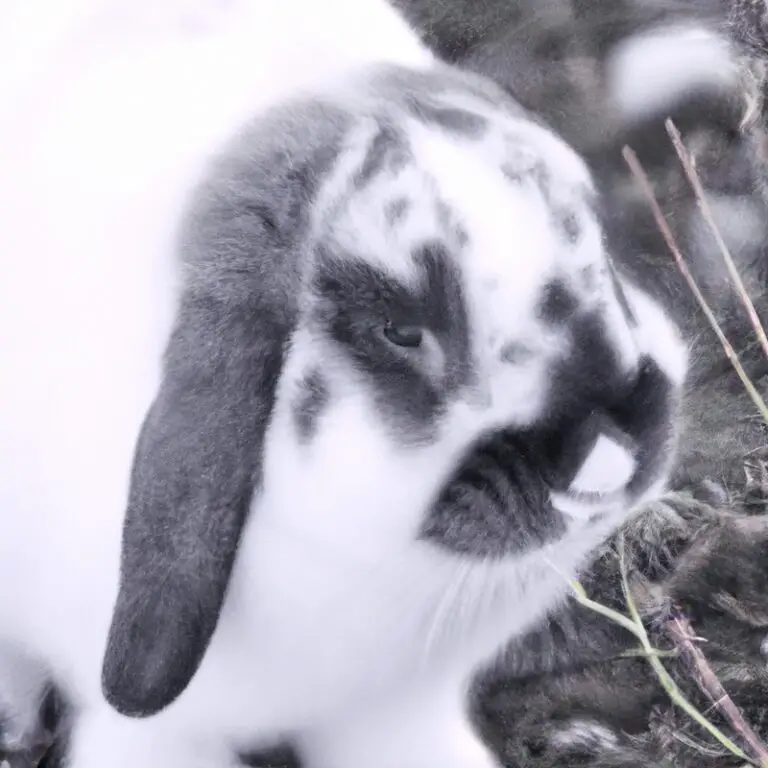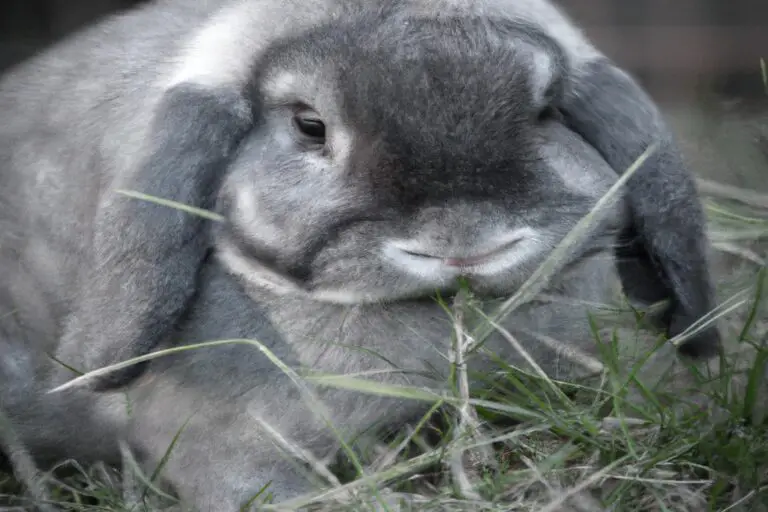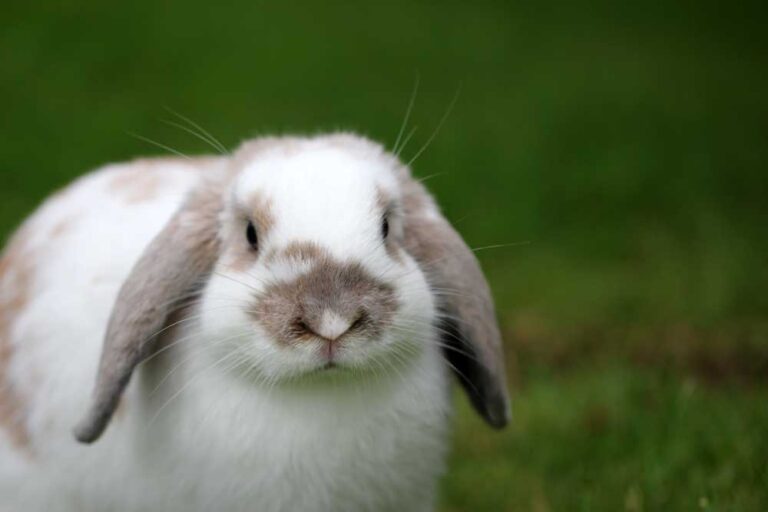What Happens If i Don’t Cut My Rabbits Nails – Essential Care Tips
Key Takeaways:
- Long rabbit nails can cause discomfort and make it difficult for them to walk or hop properly.
- Overgrown nails can lead to serious health issues, including painful infections and deformities in a rabbit’s feet.
- Regular nail trimming is essential to maintain your rabbit’s overall well-being and prevent unnecessary pain.
- If you neglect to trim your rabbit’s nails, it can also result in damage to furniture and other household items as they try to file down their own nails.
Do you know what happens when you neglect to trim your rabbit’s nails?
Well, let me tell you, it’s not pretty.
Just like humans, rabbits need regular nail trimming to maintain their health and well-being.
Those little claws might not seem like a big deal, but they can cause some serious problems if left unchecked.
From pain and discomfort to an increased risk of injuries and infections, the consequences of neglecting nail trimming can be severe.
In this article, we’ll explore why nail trimming is so important for rabbits, how to identify when it’s time for a trim, and the best methods for safely maintaining your bunny’s nail length.
So, grab a carrot and let’s dive in!
| Consequences of Not Cutting Rabbit’s Nails | |
| Issue | Consequence |
| Overgrown nails | 1. Difficulty in walking or hopping 2. Increased risk of arthritis 3. Deformities in the feet |
| Nail injuries | 1. Broken or split nails 2. Pain and discomfort 3. Risk of infection |
| Scratching | 1. Damaged furniture and belongings 2. Skin irritation or wounds 3. Risk of injury to other animals or humans |
| Behavioral issues | 1. Aggression or irritability 2. Decreased mobility and exercise 3. General discomfort or pain |
| Matted fur | 1. Fur might get stuck to the long nails 2. Pain and difficulty in grooming 3. Risk of skin infections or abscesses |
Why Nail Trimming is Important for Rabbits
Regular nail trimming is important for rabbits to prevent discomfort and health issues.
Understanding the Anatomy of a Rabbit’s Nails
Understanding the anatomy of a rabbit’s nails is important for their overall health.
Rabbit’s nails consist of a hard outer shell called the nail, and a softer fleshy part called the quick.
It’s crucial to trim the nails regularly to prevent them from growing too long.
Long nails can cause discomfort, pain, and difficulties for your rabbit while moving and grooming themselves.
When trimming, be careful not to cut into the quick, as it can bleed and be painful for your furry friend.
Regular nail trims will keep your rabbit happy and healthy.
The Consequences of Neglecting Nail Trimming
Neglecting nail trimming for rabbits can lead to several consequences.
First, their nails can become overgrown and curl inwards, which may cause pain and discomfort when walking or hopping.
Second, long nails can get stuck in carpets, fabric, or any other material, leading to injury.
Third, rabbits may develop an altered gait or posture to compensate for the discomfort, which can lead to long-term skeletal issues.
Regular nail trimming is important to keep your furry friend happy and healthy.
Common Problems Caused by Overgrown Nails
Overgrown nails in rabbits can lead to various problems.
These include discomfort and pain for your bunny, as they can become tangled in carpet or other materials.
Mobility issues may arise, as long nails can make it difficult for rabbits to walk or hop properly.
Additionally, there is a risk of fractures and serious injuries, as overgrown nails can become brittle and prone to breaking.
In some cases, nails may curl into the rabbit’s paw pad, causing infection.
Regular nail trimming is essential to prevent these problems and ensure your rabbit’s well-being.

Signs that Your Rabbit’s Nails Need Trimming
If you notice your rabbit’s nails are curling or overgrowing, it’s a sign that they need trimming.
Physical Signs to Look Out For
Physical Signs to Look Out For:
- Overgrown nails: If your rabbit’s nails are long and curling, it’s a clear sign they need trimming. Overgrown nails can cause discomfort and potential injury.
- Difficulty moving or hopping: Watch out for any limping or reluctance to move. This could be a sign of long nails causing pain or discomfort while hopping.
- Excessive scratching or grooming: Rabbits with long nails may scratch themselves excessively or spend more time grooming, trying to alleviate discomfort caused by their nails.
- Injuries or bleeding: If you notice your rabbit’s nails have caused scratches, injuries, or bleeding, it’s definitely time for a trim. Long nails can easily snag and cause harm.
Keep a close eye on your rabbit’s nails and address any signs of overgrowth promptly to ensure their comfort and well-being.
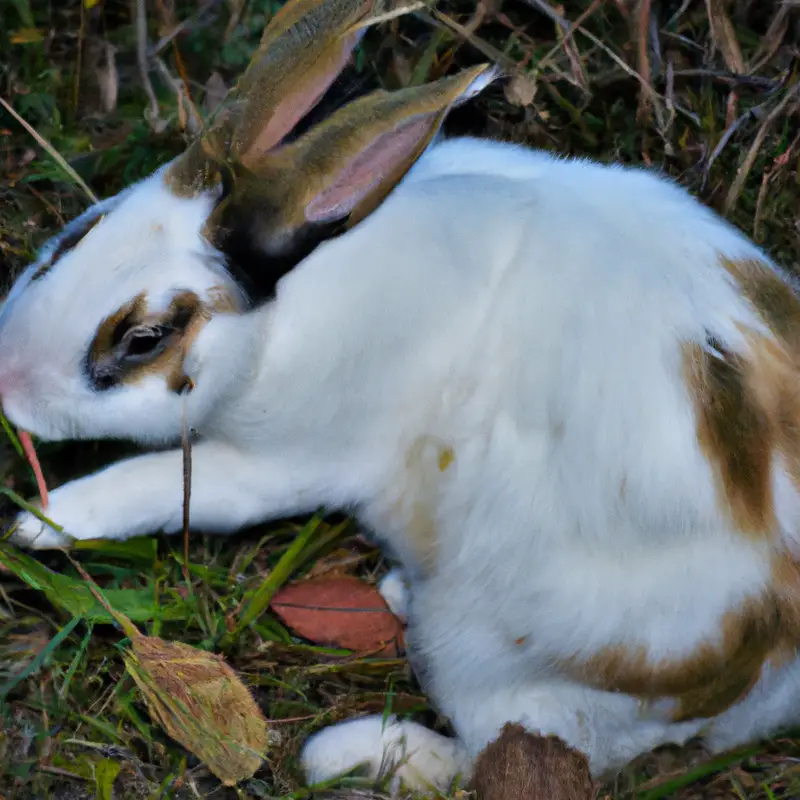
Behavioral Signs that Indicate Overgrown Nails
If your rabbit’s nails are overgrown, you may notice certain behavioral signs.
These include difficulty moving or hopping, reluctance to play or exercise, changes in gait, and a general lack of enthusiasm.
Additionally, your rabbit may start to groom excessively or bite at their nails in an attempt to trim them themselves.
These behavioral signs can be a clear indication that it’s time to trim your rabbit’s nails to ensure their comfort and well-being.
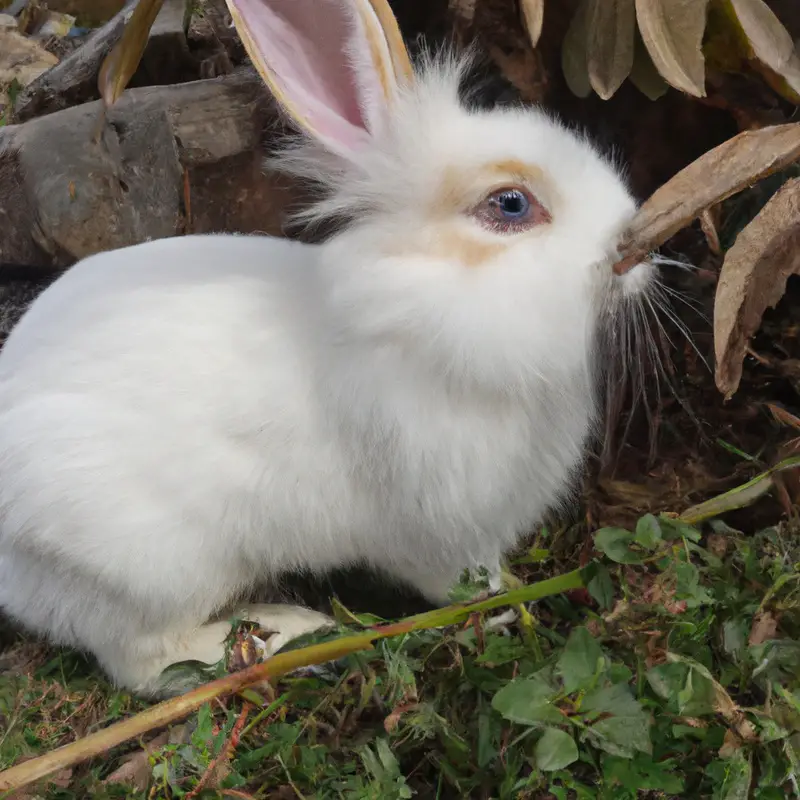
The Dangers of Ignoring the Signs
Ignoring the signs that your rabbit’s nails need trimming can lead to potential dangers.
Overgrown nails can cause discomfort and pain for your rabbit, leading to difficulty walking and even deformities.
Additionally, long nails can get caught on objects or in carpeting, causing injury or fractures.
In some cases, nails that are left untrimmed can grow into the pads of the rabbit’s feet, resulting in infection and serious health issues.
Regular nail trimming is essential for the overall well-being and mobility of your rabbit.
The Importance of Regular Nail Trimming
Regular nail trimming for your rabbit is essential.
Preventing Pain and Discomfort for Your Rabbit
Regular nail trimming is essential for preventing pain and discomfort in your rabbit.
Overgrown nails can cause a variety of issues, such as difficulty walking, infections, and even broken nails.
By keeping their nails at the proper length, you can ensure your rabbit’s comfort and overall well-being.
Additionally, providing a suitable environment for your rabbit to engage in natural behaviors, like digging and hopping, can also help prevent nail overgrowth.
Remember to consult your vet or a professional for guidance on how to trim your rabbit’s nails safely and effectively.
Maintaining Good Health and Mobility
Maintaining good health and mobility is essential to keeping your rabbit happy and comfortable.
Regular exercise is key, as it helps to keep their muscles strong and their joints flexible.
Encourage your rabbit to hop, run, and explore.
Providing a well-balanced diet is also important, as it ensures they receive the necessary nutrients to support their overall health.
Lastly, keeping up with regular veterinary check-ups is crucial, as they can catch any health issues early and provide appropriate treatment.
By incorporating these practices into your rabbit’s routine, you’ll help them stay healthy and mobile for years to come.
Reducing the Risk of Injuries and Infections
Regularly trimming your rabbit’s nails is essential for reducing the risk of injuries and infections.
Long nails can get caught on objects, leading to painful tears and fractures in their delicate feet.
Trimmed nails also decrease the chances of your rabbit scratching or injuring themselves, as well as reduce the likelihood of dirt and bacteria accumulating under their nails, which can cause infections.
Proper nail care is a simple but important aspect of keeping your rabbit healthy and comfortable.
How to Safely Trim Your Rabbit’s Nails
To safely trim your rabbit’s nails, you’ll need the right tools and a step-by-step approach.
Gathering the Right Tools for the Job
To safely trim your rabbit’s nails, it’s important to gather the right tools.
Here are the essential tools you’ll need:
- Nail Clippers: Look for small, curved clippers designed specifically for small animal nails. Avoid using human nail clippers or scissors, as they can cause injury.
- Styptic Powder: This powder helps stop bleeding if you accidentally trim the nail too short. Apply it to the nail immediately after cutting to prevent excessive bleeding.
- Treats: Having tasty treats on hand will help make the nail trimming experience more positive for your rabbit. Use them as rewards for good behavior during the process.
Remember, having the right tools makes the job easier and ensures the safety of your rabbit.
Step-by-Step Guide to Nail Trimming
To safely trim your rabbit’s nails, here is a step-by-step guide:
- Gather your supplies: You will need nail clippers designed specifically for rabbits, pet styptic powder (to stop any bleeding, and treats for rewards.
- Find a calm and quiet space: Choose a calm area where you and your rabbit can both feel relaxed. You may want to have someone gently hold your rabbit while you trim the nails.
- Get your rabbit comfortable: Place your rabbit on a non-slip surface, such as a towel or mat, to prevent them from slipping. Gently stroke your rabbit to help them relax.
- Start with the back feet: Carefully hold your rabbit’s foot and gently press their pad to expose the nails. Trim only the curved part of the nail, being careful to avoid the quick (the pink area that contains blood vessels.
- Move on to the front feet: Repeat step 4 for the front feet, taking care to trim only the curved part of the nail. If you’re unsure where the quick is, trim small amounts at a time to be safe.
- Reward and comfort your rabbit: Offer your rabbit a treat and cuddles after each successful nail trimming session to make it a positive experience for them.
Remember, take your time and be patient with your rabbit. If you are unsure or uncomfortable, it’s always best to consult a veterinarian or a professional groomer for assistance.
Dealing with Resistant or Anxious Rabbits
Dealing with resistant or anxious rabbits can be a challenge, but there are a few strategies you can try. First, create a calm environment by minimizing noise and distractions.
Slowly introduce your rabbit to nail trimming by starting with short sessions and gradually increasing the duration.
Offer treats and positive reinforcement to help create a positive association with the process. If your rabbit is still resistant, consider seeking help from a professional or a veterinarian experienced in handling rabbits.
Remember, patience and gentleness are key when dealing with anxious rabbits.
Other Methods to Manage Rabbit Nail Length
Other Ways to Keep Your Rabbit’s Nails in Check
Providing Suitable Surfaces for Natural Wear
To provide suitable surfaces for natural wear, you can incorporate various options in your rabbit’s environment.
Firstly, consider using a scratching post or wooden blocks for them to chew on.
This helps to naturally file down their nails.
Secondly, placing rough surfaces like bricks or natural stone in their housing area encourages wear as they move around.
Lastly, allowing your rabbit access to outdoor areas with different textures, such as grass or gravel, can also aid in wearing down their nails.
Ultimately, providing these surfaces can support your rabbit’s natural grooming habits.
Incorporating Regular Exercise and Activity
Regular exercise and activity are important for maintaining your rabbit’s nail length.
By providing opportunities for your rabbit to run, jump, and explore, you are helping to naturally wear down their nails.
This can reduce the need for frequent nail trims and minimize the risk of overgrowth.
You can incorporate exercise by setting up a play area with tunnels, platforms, and toys, or by allowing supervised free-roaming time in a safe, rabbit-proofed space.
Additionally, interactive toys and games can help keep your rabbit mentally stimulated and physically active.
Remember to always provide supervision and a safe environment when allowing your rabbit to exercise.
Consulting a Professional Groomer or Veterinarian
If you’re unsure about how to trim your rabbit’s nails or prefer to leave it to the professionals, consulting a professional groomer or veterinarian is a great option.
They have the experience and knowledge to handle your rabbit’s nails safely and efficiently.
They can also provide guidance on proper nail care and recommend the best tools or techniques to use.
Additionally, if your rabbit’s nails are overly long or causing discomfort, a professional groomer or veterinarian can address any underlying issues and provide the necessary treatment.
Just make sure to choose a reputable and experienced professional for the best results.
Frequently Asked Questions
How often should I trim my rabbit’s nails?
You should trim your rabbit’s nails every 4-6 weeks.
Regular nail trims are important to prevent overgrowth and discomfort for your furry friend.
If you hear their nails clicking on the floor or see them getting caught on surfaces, it’s time for a trim.
Gently clip the tips, making sure not to cut into the quick, which is a sensitive part of the nail.
If you’re unsure or uncomfortable doing it yourself, consult a vet or a professional groomer for assistance.
Can I use regular nail clippers or do I need specific ones?
You’ll need specific nail clippers for your rabbit’s nails, as regular ones won’t do the trick.
Their nails are different from ours, so specialized clippers are necessary.
Just like regular nail clippers for humans, there are different types of rabbit nail clippers available, such as scissor-style or guillotine-style clippers.
These options ensure a safe and proper nail trimming experience for your furry friend.
Using the right tools will help you avoid any potential harm to your rabbit during the grooming process.
Are there any risks associated with nail trimming?
Trimming your rabbit’s nails is an important aspect of their care routine. However, there are a few risks associated with it.
Firstly, if you accidentally cut the nail too short, you may cut into the quick, which can cause bleeding and pain.
Secondly, if your rabbit struggles during the trimming process, they may accidentally scratch you or themselves. To minimize these risks, it’s recommended to have a veterinarian show you the proper technique and to use nail clippers designed specifically for rabbits.
What if I accidentally cut the quick?
Accidentally cutting the quick of your rabbit’s nail can happen, but don’t worry, it’s not the end of the world. The quick is a blood vessel that runs through the nail, and if you cut into it, it will bleed and cause discomfort for your rabbit.
To stop the bleeding, you can use styptic powder or cornstarch.
Apply gentle pressure to the nail and seek veterinary help if the bleeding doesn’t stop. Going forward, take extra care when trimming your rabbit’s nails to avoid cutting the quick.
My rabbit chews on its nails, is that normal?
My rabbit chews on its nails, is that normal? Yes, it is normal for rabbits to chew on their nails.
Chewing is a natural behavior for rabbits and helps them wear down their nails.
However, excessive chewing or overgrown nails can be a sign of an underlying issue, such as boredom or improper diet. Regular nail trimming and providing your rabbit with plenty of chew toys can help prevent excessive nail chewing.
If you are concerned, it’s always best to consult with a veterinarian who specializes in rabbits.
Final Verdict
Neglecting to trim your rabbit’s nails can have serious consequences for their health and well-being. Overgrown nails can cause pain, discomfort, and even lead to injuries or infections.
It is important to recognize the signs that your rabbit’s nails need trimming, such as physical and behavioral changes.
Regular nail trimming can prevent pain, maintain good health and mobility, and reduce the risk of injuries and infections. By following proper trimming techniques or seeking professional help, you can ensure your rabbit’s nails are kept at a safe and comfortable length.
Additionally, providing suitable surfaces for natural wear and incorporating regular exercise can also help manage nail length.
Remember, taking care of your rabbit’s nails is an essential part of their overall care and an important aspect of being a responsible rabbit owner.


